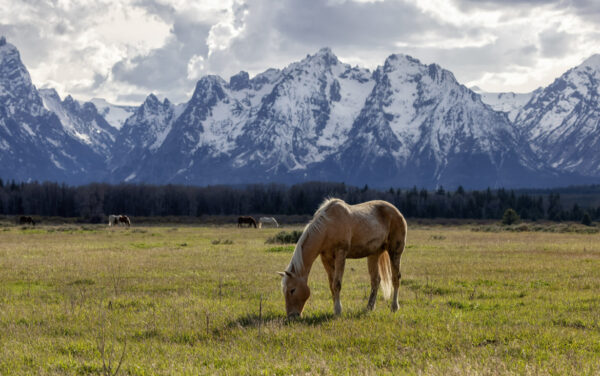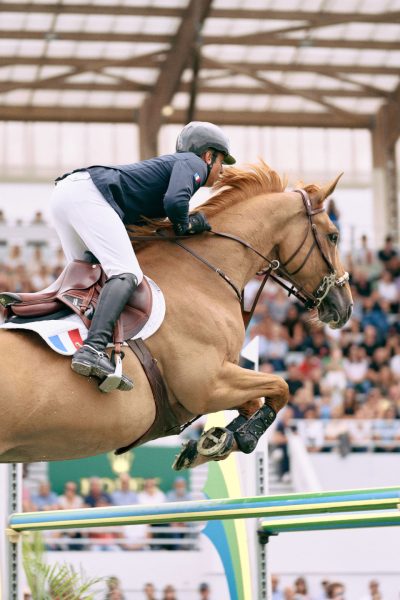
The dual symbolism and the fascination of the horse

Since ancient times, the fascination of the horse has intrigued all peoples, leaving a strong imprint on the collective memory. Considered sacred and a ‘totem’ animal, it has always been depicted alongside man, not only in historical narratives, but also in mythological and literary ones.
Over time, the symbolism of the horse has taken on multiple, and often contradictory meanings, tied to historical moments and prevailing cultural beliefs.
The archetypal horse is, in fact, of a dual nature, and represents the continuous manifestation of opposites. It is born as a child of the night and mystery, a messenger of both death and life.
On one hand, it is a lunar and chthonic creature, connected to the waters, which either nourishes or drowns; on the other, it is uranic and solar, connected to fire, which destroys and triumphs.
On the ‘material’ level, the duality enclosed in the horse symbol is often expressed by the color of its coat: white conveys the mastered instinct; black, on the contrary, evokes uncontrollable primal instincts.
The two opposing colors speak of the continuous dialectical relationship between good and evil, between the psyche and the mind. Just as night leads to day, the horse also changes appearance, abandoning its dark origins to follow the light, and rise to the heavens.
The symbol of the white horse
The white celestial horse expresses ‘the noblest conquest of man,’ that is, beauty achieved through the domination of spirit over the senses.
It symbolizes majesty and the divine, and in the texts of various peoples, it becomes the steed of heroes, saints, and spiritual conquerors.
In the Apocalypse, the last book of the New Testament, the heavenly armies that accompany Christ ride white horses.
In Greek mythology, four white horses pull the chariot of the sun god Apollo, becoming attributes of the god himself. In Buddhist texts, Prince Siddhartha is accompanied by “Kanthaka,” who also has a white coat, and in Islamic tradition, we find “Buraq,” the white winged horse of the Prophet Muhammad.
The symbol of the black horse
The symbolism of the black horse evokes infernal and sinister power; it manifests death and man’s self-destructive impulses. From Ancient Greece to the Middle Ages, the horse with a dark coat is depicted as the horse of death, widespread throughout European tradition.
The chariot of Hades, the Greek god of the underworld, is drawn by four black horses of the afterlife. Also in the march of the four horsemen of the Apocalypse, the third rides a black horse, metaphor for a great material and spiritual famine. One of the most famous Scottish legends speaks of the “Kelpies,” aquatic demons with the appearance of majestic black horses.
The duality of the horse in Plato’s myth
Through the image of a chariot pulled by two horses, the ancient Greek philosopher Plato, in his work Phaedrus (4th century), elaborates a myth to explain the duality of the human soul, divided between the sensible (the material) and the spiritual.
In the myth of the winged chariot, Plato personifies the soul as a chariot drawn by two winged horses: one white, representing the spiritual soul and the house of elevated passions; one black, symbolizing the baseness and materiality of the soul.
The two horses are driven by a charioteer, symbolizing reason, who has the difficult task of reaching the Hyperuranium, the world of ideas and truth. In the text, the pair of horses symbolize the dualism tied to the irrational part of the soul, and its continuous inner struggle.
On one hand, the white horse pushes upwards, toward the celestial plain of knowledge, but on the other, the black horse pulls downward, distancing itself from his being, to remain in the sensible world and the realm of desire.
The fascination with the horse, with its dual and symbolic nature, continues to inspire collective imagination, weaving myths, beliefs, and narratives that reflect the eternal conflict between light and shadow, spirituality and matter.
Ludovica Locatelli
Source: Dizionario dei Simboli di Jean Chevalier e Alain Gheerbrant, anno edizione 1999, titolo originale Dictionnaire des symboles
© Rights Reserved.



.png)













